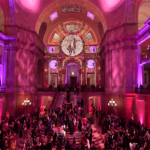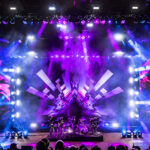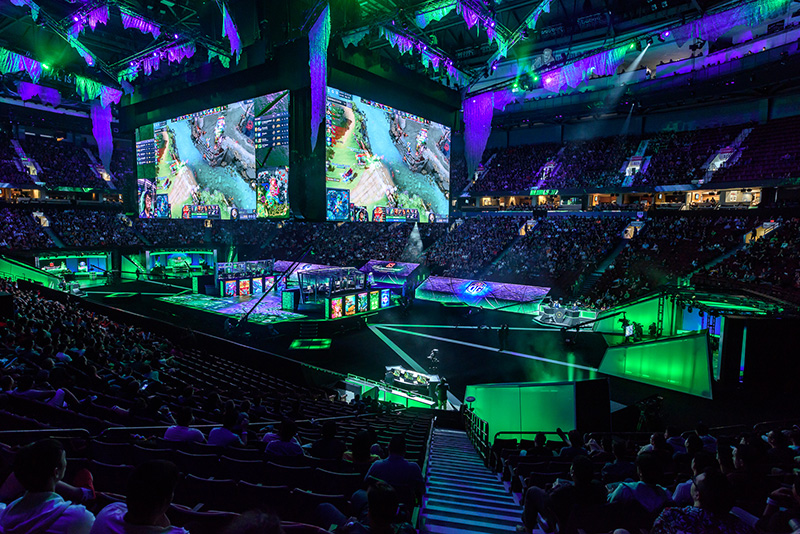
eSports are a form of competition using video games. Most commonly, eSports is a form of organized multiplayer video competitions, particularly between professional players. Although organized online and offline, competitions have long been a part of video game culture. These were largely between amateurs until the late 2000s, when participation by professional gamers and spectatorship in these events, through live streaming, saw a large surge in popularity. That surge in popularity has opened the doors to big money and huge live productions.
One such tournament is for the game DotA 2, a sequel to Defense of the Ancients (DotA) created by Valve, the folks who brought Half- Life to the masses in 1998. It is a multiplayer online battle arena (MOBA) video game and one of the first major titles of its genre. It is also the first MOBA for which sponsored tournaments have been held. The original DotA (Defense of the Ancients) was a community-created modification for WarCraft III made in 2003, an outgrowth of the original WarCraft video games from the mid-1990s. Valve acquired the trademark for DotA in 2012 and shipped DotA 2 in 2013.
This live broadcast tournament is in its eighth year. Valve is a developer of leading-edge technologies, including Steam in 2003, to serve as a digital content distribution channel, before app stores existed. Steam has since grown and evolved into a platform for thousands of creators and publishers to deliver content that currently makes over 27,000 games available to users around the world.
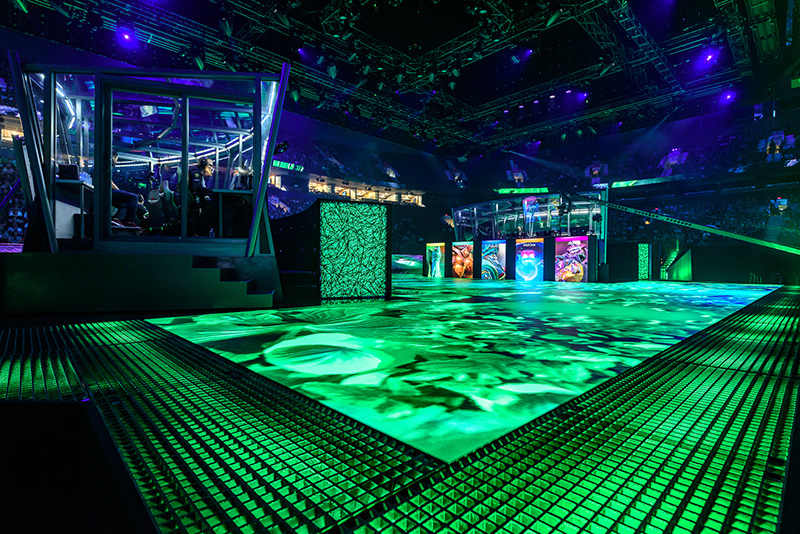
The 2018 International DotA 2 Championships, staged at Rogers Arena in Vancouver, BC, was seen by millions of concurrent viewers online as well as the 18,000 ticket-buying fans. It’s like a football game meets a rock concert, but over six days, with some particularly avid fans creating elaborate cosplay costumes, much like they are going to a Dragon Con. This year’s DotA 2 prize pool totaled $25,532,177 Canadian ($23,932,177 US) with the first-place team winning just over $11 million ($8,450,000 US) and last place (18th) making a mere $63,585 ($48,826 US).
The 16 teams that compete at the championship are made up of five players, or “gamers,” each. Players select avatars, or “Heroes” from the DotA stable of characters, to represent them in the virtual reality of the game.
Historically, “avatar” is a concept in Hinduism that means “descent.” It refers to the material appearance or incarnation of a deity on earth. In the computer world, an avatar specifically refers to a character that represents an online user.
Valve hired The Production Network (TPN) to help produce the event. While Valve holds all creative control over the event, they rely on TPN to achieve it with TPN’s production director Steve Kidd at the helm.
Since 2014 Alex Berry, owner and principal at Alex Berry Design (alexberrydesign.com) has been the scenic and lighting designer for the championship games. Berry was hired by TPN. He has been designing “since I could hold a pencil”, and embarked on his professional career at 15, designing sets for VillageTheatre in Issaquah, WA (near Seattle).
“The effort this year was to create an UNDERWORLD effect,” Berry says, with the illusion of stalactite forms in the lighting rig above, “which actually got in my way a lot. As a scenic and lighting designer, sometimes I get in my own way,” laughs Berry. Four areas for broadcast commentators, the “Aegis” or awards stage, and two separate areas for analysts who do “shout outs” surround the main stage in the center of the arena. On stage enclosed “pods” house the two teams competing, in which five players each form the two teams.
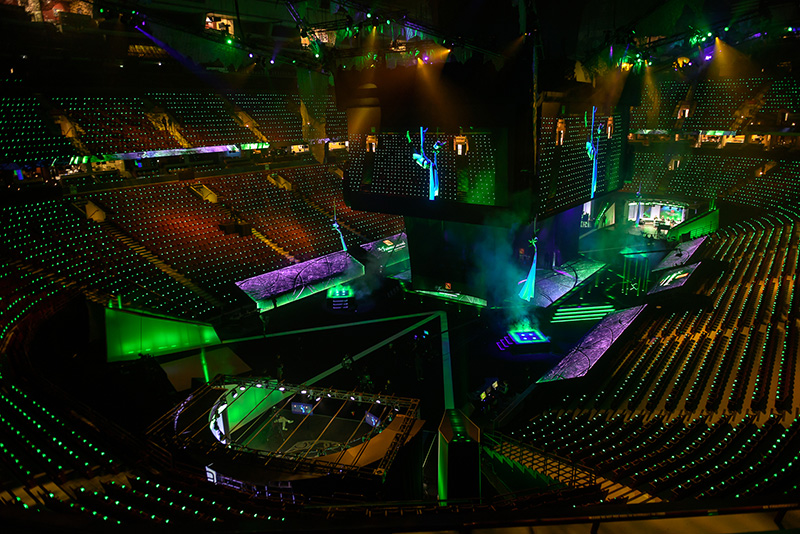
Lighting and Video
Brock Walker co-designed this year’s show with Berry. “I’ve known Brock for twenty years and we have worked together
in the past.” explains Berry. “The way we split up the work is, Brock did all the renderings; he made it look really nice and pretty. Then I came in and made sure it would work out technically, that everything was fitting. Stage-design wise, I have the most history with the show, so I knew exactly how the teams walk on stage, and where the broadcast areas needed to be.”
The overall lighting design required 1,100 automated lights, 2,400 additional control channels, and 44 universes of DMX. The basic layer driving all this was the fact the show was being broadcast live. A daylight color temperature was established for that purpose. Seven grandMA2 consoles dedicated to a multi-user programming were networked together making it easier for programmers to access the different areas of the light rig from various positions in the arena.
All LED screens were fed media by Christie Digital’s Pandoras Box media servers, which processed an incredible amount of information through literally miles of LED tiles. Sam Kriemelmeyer programmed the standalone Pandora to run in the base layer of the E2 and Spyder video switchers.
Creative Technology (CT) supplied all the ROE LED tiles, “which we kept around the 3mm range,” says Berry.
The Four Main screens featured ROE CB3 LED tiles. Measuring 32 feet tall by lengths of 70 and 49 feet, they fulfilled the obligatory stage surround featuring all the action of the game, insets of players with their representative avatar information and statistics. The NFL has nothing on this setup. In fact, during the six-day tournament, 43 cameras fed into two Monday Night Football trucks custom made for ESPN. The entire main stage floor is comprised of ROE Visual’s new Black Marble Floor LED tile. Berry selected the “shiny” version. ROE Black OnyX 3 modules filled in dasher façade, up and over five front seating rows. Logos of the 16 competing teams appear on these dasher LED’s, disappearing as each gets defeated.
For the analyst booths and player pods, Berry chose Roe Black OnyX 2.84mm tiles.
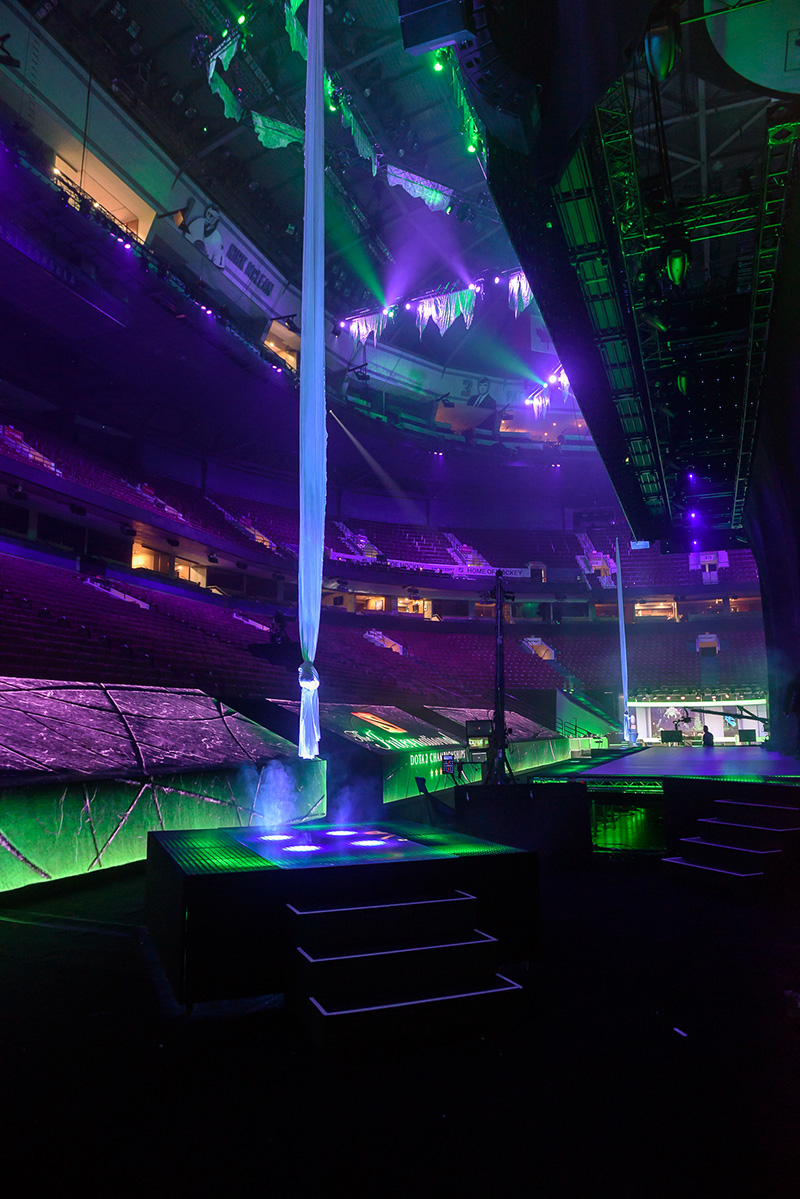
Berry used Martin MAC Vipers in a four-point area system to effectively achieve video lighting level on the main stage, since average throws were between 40 and 100 feet in length. “The Viper is pretty much my workhorse for area light,” he says.
Three broadcast or Analysts sets (one each for Russian, Chinese, and English languages) had individual low trim grids populated with MAC Auras. “It’s just a big, huge wash of light that delivers a soft edge; perfect for that environment.” For lighting commentator stages, Berry used Vipers once again in a traditional three-point key light focus.
Berry also created linear effects surrounding the perimeter of the stage by placing Chroma-Q Color Force II 72’s under the grating at its edge. “This also allowed for some nice chases,” he notes. Four separate eight-by-eight-foot platforms that sat on the arena floor just offstage each corner also had grated decks. Under these, Berry placed Martin MAC Axioms for uplights in groups of five delivering a much more concentrated beam.
Inside the two soundproof player pods on stage, for front light, Berry used Color Kinetics Fuse 12, which has a controllable color temperature. The pods also block the player’s vision from seeing any LED screens to prevent them from knowing what the other team is doing.

“The players do not want light in their eyes,” explains Berry, so he ran all stage light at 50 foot-candles and, inside the pods, cut the light intensity down further, to 30 foot-candles, “which is lot of loss for camera,” he notes.
The audience themselves got interactive with the whole gaming show by wearing PixMob wristbands. Berry also dedicated 200 Auras strictly for audience game generated MIDI light “cues.” Additional Vipers were used on the audience for texture and spots, with Axioms tied into different in-game effects.
Rather than have to walk to a central location to get to the board during the broadcast; one is stationed at each end of the arena for quicker access. This way, either Berry, his lighting director Parker Genoway or associate LD Greg Scott can walk up to any board and log in. Scott is tasked with the broadcast and analyst lighting, and walks the floor for focus along with Berry.
There are “special segments” added each day of the show, Berry notes. “We would get a list of segment updates each day that were designated for the following day. While one of us babysat the show,” says Berry, another would step over to the preprogramming board and build cues as needed, “so we weren’t there until 3 a.m., programming.”
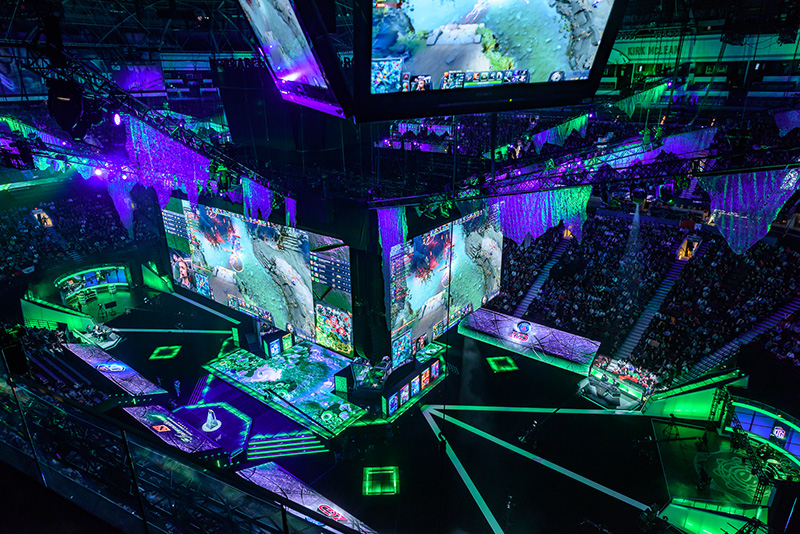
Variable Realities
Enhancing the underworld effect, walk-in looks are cool and low; just enough light to get to seats safely. The stalactites hanging from the truss are made of a material called Kaos Fabric, made by Rose Brand. The material is pressed plastic strings — very translucent, which “takes on light exceptionally well,” says Berry. The entire main stage was masked in a kabuki reveal for the opening act. As the curtain drops, a Canadian Orchestra performed onstage while aerialists ascend silks in a choreographed dance over the eight-by-eight-foot grated platforms at each corner of the stage.
“When we get down to the actual game play we only have ten lighting cues over the entire day,” says Berry, “but never know exactly which order they will come.”
For most games, the winners are determined on a two-out-of-three-game basis. “Depending on the outcome, we can find ourselves in several different trajectories. My programmer, Parker, who is pretty freaking amazing at what he does, built ten macros, which are dedicated specifically to the action a particular outcome requires. These macros amount to two pages of faders on the grandMA2 and allow Parker to get wherever he needs to be. For instance we have the “Big Win” look, the “Series Win” look and, at the end of the game, we feature the big Good Game (BGG) or small GG and others.”
The first MIDI macro effect that is MIDI triggered by the game is “FIRST BLOOD.” As the name (and Rambo movie) indicates, that is when a player makes his first kill of opponents. As the actual moment this will occur is unknown, it, too, has its own macro, one which really energizes the crowd. Among other effects, the audience gets saturated in a timed out deep red sweep, with the PixMob bracelets duplicating the color.
“This also lets us know everything is working,” laughs Berry, “kind of a self feedback thing, you know.”

These effects are seen in the game on the main screens and echoed in the 508 modules of ROE BM4 LED that landed on a two-by-eight-foot grated stage surround size, and four-by-eight-foot support stage. The lighting system executed additional effects. Again, these lighting cues signal to the audience what action is taking place in the game. Their PixMob bracelets are included in these along with a long stack of other timed cues taking place throughout the system simultaneously.
A 15-segment sequence of “pick/ bans” takes place when players get one round to banish an opposing avatar. It’s kind of like jury selection by lawyers — “This juror is dismissed,” except a lot more fun. The LED screens on floor feed information, and a countdown timer lets the audience know the players participating, and the avatar’s abilities.
Next comes the big “Augmented Reality” moment. In front of each pod when a player chooses a character, the avatar pops into space on stage “in camera”, or augmented reality. All the jib cams have 3D tracking, and are thereby able to move around the character and see the player behind it. But with augmented reality, there is actually nothing on stage, the image is viewable through the broadcast or up on the LED screens. This technology was introduced to DotA 2 three years ago and has been used ever since.
Of course, besides spending most of the day in virtual or augmented reality, some real time housekeeping looks need to take place during these macros. “We usually are not in that close of contact with the Russian or Chinese who are doing their own broadcasts,” points out Berry. “In order to, say, not leave the analysts in the dark, we build a 40-second delay into the Game cue fadeout, so we never dump to black on the other broadcasts.”
The games and broadcast run for 10 hours each day, and there are no breaks in the action. Though Berry does not program anymore, he will sit at the console and spell Parker or Greg for food breaks and such. “Hence the macros,” Berry laughs, “otherwise I would be completely lost.”

During pre-production, Valve did a lot of programming for the game itself so it could spit out MIDI notes to the two grandMA’s online during the live show to activate over 100 macros for the different effects that reflect the action of the game. Depending on the action, spell, or attack, these MIDI cues send effects through the audience lights, firing Pandora videos on the LED floor and triggering the PixMob bracelets. Not only is the audience getting information by viewing the action taking place on the large LED screens, they are receiving a visceral reaction through the effects in the rig.
Berry and the programming team of lighting director Genoway and associate lighting designer Scott spent a week pre- programming at Earlybird Visual in Burbank, CA, while the show was prepping. Christie Lites Seattle handled the main rig and their Vancouver, BC office prepped all the analyst areas and truss.
“Fitting the huge production of 80 trucks of gear with only two docks in this space proved interesting and a bit challenging,” admits Berry, “and even in our weekly production meetings the general consensus deemed the schedule aggressive.”
“Steve Kidd did a fantastic job of putting together a 24 hour load-in schedule for the week prior to show,” Berry adds. “We stayed completely on schedule for the entire load-in, to the point where certain trusses did go up at a certain hour as scheduled and everything hit their mark.”
Berry looks forward to doing future championships.
The 2019 DotA 2 International Tournament will take place in Shanghai, China.
Defense of the Ancients 2 (DotA 2) International Finals
Event Overview:
The eighth annual DotA 2 International Finals took place Aug. 20-25 at Rogers Arena in Vancouver, BC. The event was lit with 1,100 automated lights using 2,400 control channels and 44 universes of DMX along with 260 motors and 4,300 feet of Christie Lites truss. The design team and crew made use of seven grandMA2 networked lighting consoles for control.
Gear
Main Rig:
174 Martin MAC Viper Performances
376 Martin MAC Auras
120 Martin MAC Axioms
32 Martin MAC 101’s
32 Martin VDO-Sceptron 10’s
144 Chroma-Q Color Force II 72’s
44 Chroma-Q Color Force II 12’s
60 Chroma-Q Color Force 12’s
60 Philips Color Kinetics 1-Fuse 12’s
2 Philips Color Kinetics ColorBlast 12’s
24 RGBW LED tape units
16 Radiance Hazers
2 FX Fans
Crew
- LD/Scenic Designer: Alex Berry/Alex Berry Design
- Co-Scenic Designer: Brock Walker/Kite and Nail
- Lighting Director/Programmer: Parker Genoway
- Associate LD: Greg Scott
- Christie Lites Rep: Terry Higgs/THinc
- Lighting Crew Chief: Robbie Zuuring/THinc
- Pandora Programmer: Sam Kriemelmeyer
- PixMob Programmer: Xavier Begin-Leblanc
- Production Director: Steve Kidd/TPN
- Technical Manager, TPN: Todd Wine/TPN
- Technical Director: Eric Batt/TPN
- Production Supervisor: Jason Richardson/THinc
- Rigging Supervisor: Chris Wilson/THinc
- Video Lead: Steve Meyer/Meyer Pro
- LED Screens Lead: Jolyon Belize/CT
- Audio Crew Chief: Jason Waggoner/Carlson Audio
- Producers: Thad Wharton, Erik Peterson, Romy Hatfield/Valve
- Technical Producer: Chris Grinstead/Valve
For more information, go to www.alexberrydesign.com and www.tpnevents.com.

